El Dorado County in the Sierra Foothills of Northern California is best known as the birthplace of the California Gold Rush. In 1848, James W. Marshall found gold at Sutter’s Mill in Coloma, about 45 miles northeast of Sacramento. Thousands of fortune seekers, many European immigrants, descended on the hills.
Along with the gold mines, the pioneers left a legacy of winemaking, which they brought from their ancestral homelands, particularly Italy.
Today, the county of El Dorado is one of the most visited agritourism destinations in the world, with attractions like apple orchards and Christmas tree farms. It’s less well-known as a wine-producing region. El Dorado and surrounding counties produce many world-class and elegant wines at affordable prices, compared to areas like Napa, Sonoma, and Paso Robles. Tastings at most Sierra Foothills wineries run between $15 and $20.
The area has seen a boom in visitor numbers over the last decades due to its proximity to large population areas like San Francisco and Sacramento.
I recently visited the area and discovered a mother lode of wineries. I tasted dozens of fabulous, affordable, and uniquely Alpine wines.
There’s Wine in Them Thar Hills!
The Sierra Mountain AVA, or American Viticulture Area, comprises eight counties, the largest of which is El Dorado. Vines grow at up to 3,000 feet in elevation. These hills can present ideal growing conditions for wine grapes.
The area also has adverse conditions, like wildfires, including the destructive Caldor fire of 2021, and severe frost in Spring 2022. Many wineries lost their vintage in 2021 and as much as 85 percent of their crop in 2022.
However, in a spectacular vintage like 2023, the AVA produced elegant, nuanced, delicate Alpine wines that can dazzle the senses.
Sierra Spice, the Magic Ingredient
The wines of the Sierra Foothills AVA are notable for their distinctive spiciness, known as “Sierra Spice.” Other descriptors include “Alpine” or “Warm Forest.” It’s a mixture of cedar, pine, and madrone evergreen trees and the snowmelt waters of the Sierra Mountains. Elevation creates zippy acidity and lighter-bodied wines that pair well with food and taste alive to my palate.
The Kids Are Alright, and the Vibe Is Chill
Many of the wineries in the Sierra Foothills are small, artisan, and family-run, with some farms in their third, fourth, or fifth generation. Many of the newest generation members grew up with each other. They attended the 4H Club as youths and studied viticulture and vinification at notable schools like Cal Poly, UC Davis, or the more local Folsom Lake College. This generation is bringing a fresh and updated vibe to the farms and wineries of El Dorado.
Some wineries opened more recently when pioneering winemakers looked to establish themselves in this more accessible and low-key wine region after realizing they could not get a foot in the door in Napa Valley.
The vibe in El Dorado is chill, and the wineries and their patrons seem to like it that way.
Apple Hill Region
The region of Apple Hill is in and around the towns of Placerville and Camino. It offers weekend visitors dozens of wineries, farms, and outdoor activities.
In the first half of the 20th century, much of the land grew crops like peas, cherries, and pears. A pear blight in the early 1950s changed everything. Farmers united and agreed that new orchards would be full of apple trees, and they smartly trademarked the name “Apple Hill.”
Today, grape vines and apples coexist in Apple Hill, which has the highest-elevation vineyards in Northern California.
Since 1964, the Apple Hill area of El Dorado has grown from the original 16 farms to over 50 today. More than 1.2 million visitors come each fall for its thriving agricultural resources, including apples, wine, Christmas trees, and other crops.
Apple Hill Wineries
Delfino Farms—Edio Vineyards in Camino has something for everyone, including apple pies, wine, and music events. The Delfino family, part Native American of the Pechanga tribe, runs this farm, bakery, vineyard, and outdoor event space. It’s been a working farm for four generations; the winery portion opened just five years ago.
Edio Vineyards
Siblings Derek, the viticulturist, and Christine, “the brains” of the operation, run the place. Derek, Christine, and their two siblings purchased the property from their parents, who inherited it from their grandparents. The industrious siblings used their annual stipend as part of the Pechanga tribe. The program aims to give young tribal members a chance to attend college. Their great-grandfather, Edio, immigrated from Genoa, Italy. Edio sold a property he owned in Napa to purchase the property in Placerville.
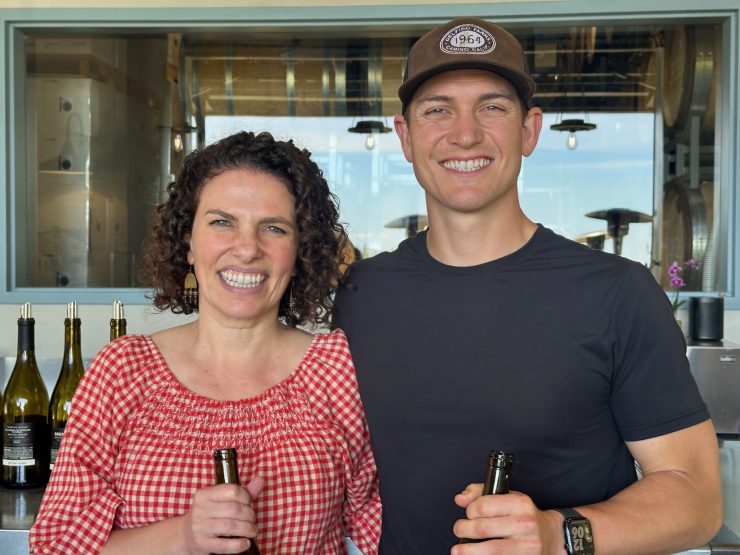
Delfino’s wines are gorgeous examples of Alpine freshness. They are light, balanced, and elegant, made with a delicate hand.
Delfino’s Signature Tasting Menu, for $18, features five wines, including a citrusy Albariño; a Robyn’s Blend of Viognier, Roussanne, and Picpoul (named after the siblings’ mother); a fresh and fruity Grenache; a light-bodied and peppery Mourvèdre; and a Frank’s Rhône Blend (named after the sibling’s great-grandfather) of Mourvèdre and Syrah.
On the property, small bites of food and French bread from Joan’s Apple Bakery are available for a fee. Visitors to the estate will usually have a family member assist them in the tasting room.
Events are a common thread at most of the El Dorado wineries. Delfino features Folk on the Farm nights from June through September.
El Dorado’s First Post-Prohibition Winery
In Placerville, Boeger Winery’s son Justin makes the wine, and his father Greg is the vineyard manager. They focus on Spanish and Italian varieties. Their historic property dates back to 1872 (see photo above), and the building is on the National Register of Historic Places. It was the Gold Rush homestead property of the Lombardi family, who sold goods to gold miners. Greg Boeger and his wife bought this property in 1972 and decided to make it the first post-prohibition winery in El Dorado County. Some old Zinfandel vines from the Lombardi family still grow on a small parcel.
Boeger – One of the Largest Producers in El Dorado County
Like their friends the Delfinos, the Boegers have roots in Napa. They are cousins of the Niccolini family, which farmed in Napa for 135 years. Mr. Delfino enticed Mr. Boeger to buy the current property in Placerville. Boeger is now one of the largest producers in El Dorado County, sometimes making as many as 35,000 cases per vintage.
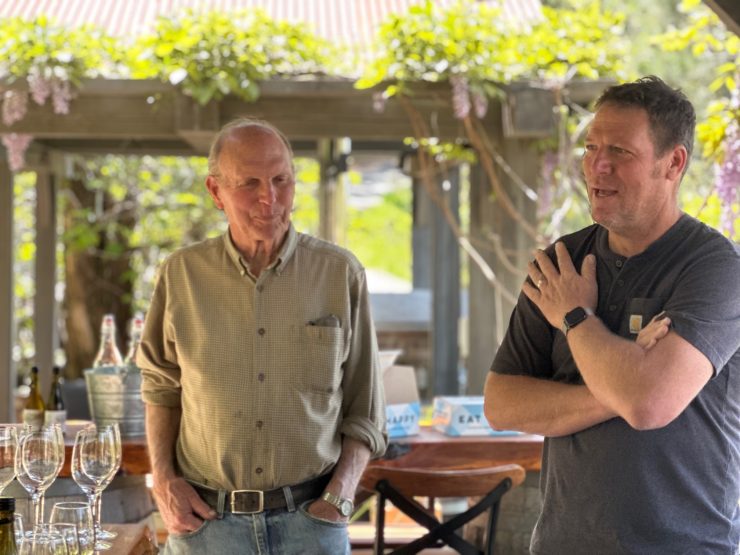
Boeger’s wine is 90 percent estate-grown on a property with many different microclimates. This allows the Boegers, for example, to grow cool-climate-loving Chardonnay in one area and heat-seeking Zinfandel just 200 feet away. Their shallow soils are also varied, with decomposed metamorphic matter, suitable for their Italian varieties.
Boeger’s flagship wine is the Italian red Barbera. They claim to have been the first to grow this El Dorado favorite, beginning in 1976. The elevation of 1,200 feet gives the wine great acidity.
The Boergers have focused on their white wines, and their bestseller is Sauvignon Blanc, both still and sparkling. Other whites include the Italian Falenghina plus Semillon, Riesling, Viognier, and Flora, a cross of Gewurztraminer and Semillon. Red varieties produced include Negroamaro, Sagrantino, Barbera, and Zinfandel.
The property is idyllic, with several old buildings, including the registered building (formerly the winery’s tasting room), an old blacksmith shop, a distillery, and an old creek bed that runs through it.
Grapevines Thrive on Ancient Volcanic Soils
In 1979, current winemaker Nolan Jones’ grandfather, a professor of geology at UC Berkeley, purchased land in Placerville that is now Lava Cap Winery. The property was originally pear, peach, and plum orchards and is now 80 acres of Cabernet Sauvignon, Chardonnay, Zinfandel, and Sauvignon Blanc.
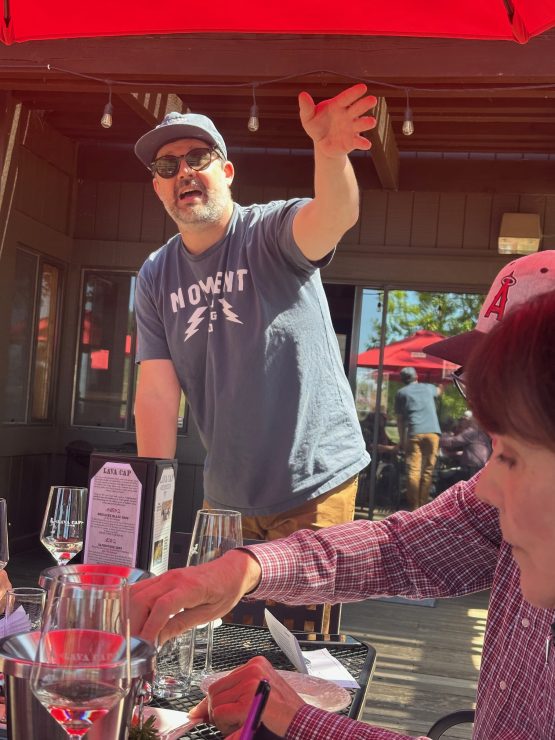
The rocky soils at Lava Cap are granitic and volcanic, which provide good drainage for the vines. “Lava cap” is a miner’s term. It refers to the hard, cap-like crusts on the earth caused by snowmelt washing down slurries of ash from the mountains. These solidified on the rolling hillsides, and miners believed they could find gold among the crumbling gravel.
Lava Cap produces about 23,000 cases per year. Their best-selling white is the Chardonnay, aged in Slovenian oak. Other whites include Vermentino, Grenache Blanc, Muscat, and Viognier. Reds include Grenache, Sangiovese, Barbera, Merlot, Mourvèdre, Zinfandel, Cabernet Sauvignon, Cab Franc, Syrah, Tempranillo, and Petit Sirah.
The wines are distinctively alpine, grown at 2,700 feet, with fresh flavors, brightness, structure, and balance. The reds have a strong red fruit character, and the whites have a crisp minerality.
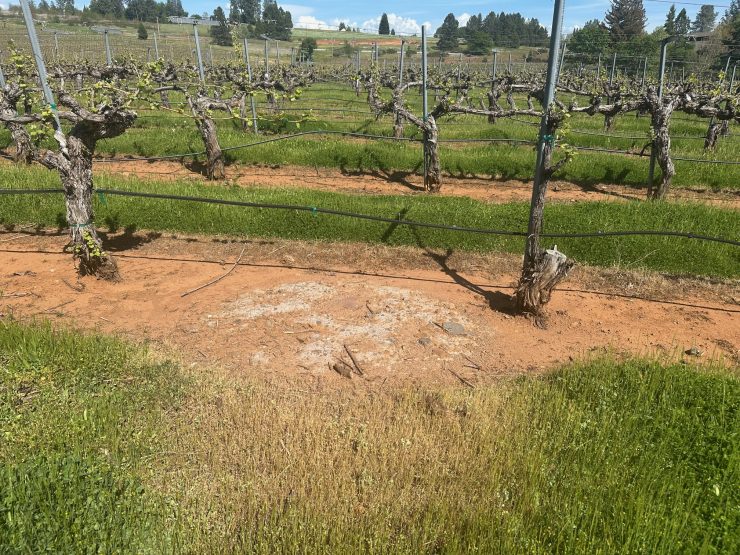
Plush Landscape and Hiking Trails
Tom and Rob Stenson, father and son, run Starfield Vineyards. Before purchasing the property in 2012, tech exec Tom tasted wines in several parts of California. After realizing he could never make a splash in Napa, he turned to laid-back El Dorado. He loved the freshness and clean style of the wines of Lava Cap and Boeger and decided to plant his vineyard in Placerville on a defunct pear orchard.
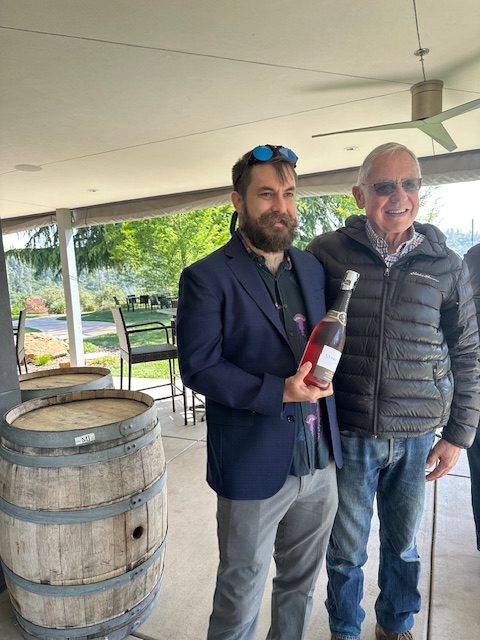
The duo developed the land into gorgeous vineyards interspersed with lush landscaping of flowers and trees, several ponds, an amphitheater, and three miles of hiking trails for visitors. The 60-acre estate grows 17 grape varieties, mostly Rhône, Italian, and Spanish.
Tom, a scientist at heart, has a keen interest in capturing and analyzing the compounds that create the Sierra Spice characteristics in the wines of the foothills. He is working with Boeger assistant winemaker Clare Kessler, an instructor at Folsom Lake College, to identify the components in this unique mixture of aromas and tastes.
Fair Play AVA
Just south of the Apple Hill region, Fair Play AVA takes its name from an old gold mining camp. With 22 wineries, this region produces high-quality, world-class wines.
Rich and Christine Rorden specialize in natural, non-malolactic conversion (acid that changes from apple-like malo to milk-like lactic) wines aged five years before release. Their winery, Cantiga Wineworks, in Somerset, Calif., is also a sought-after winery for allergy sufferers. Although they cannot advertise their wines’ health benefits, the Rordens stress that their wines contain fewer histamines because of their winemaking practices.
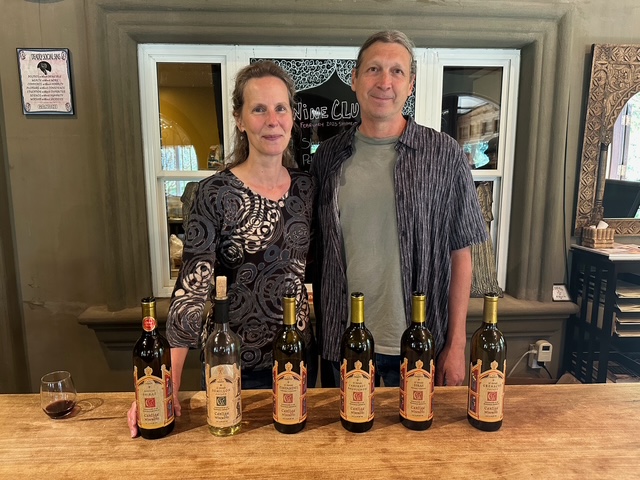
The Rordens founded Cantiga, named after a medieval Spanish song form, in 2000. Rich’s father, Bud, worked in the satellite building industry at Stanford in Menlo Park in 1959. He got the wine bug while helping with harvest at Ridge Vineyards. His reward was five gallons of grapes. Rich was “sucked into” the hobby wine making business by his father. By the late 1990s, he began making commercial-scale wine.
An “Old California” Style of Winemaking
Rich’s style of winemaking is “Old California,” which he notes is the style that took the Judgment of Paris wine competition by storm in 1976. It’s a European aesthetic and a far cry from California’s mid-80s shift to highly extracted, quick-to-market wines.
All Cantiga wines are 100 percent varietal and aged in 100 percent neutral French oak to remain true to the variety. Most Cantiga wines age three years in barrel and an additional two to five years in the bottle. “The wine tells us when it’s ready,” says Rich.
Cantiga specializes in food and wine pairings in its tasting room. The “Full Monty Pairing Plate” includes food-wine combos such as fresh black bean salsa with 2018 Grenache, tri-tip and caramelized onion crostini with 2016 Cabernet Sauvignon, and ahi ceviche with 2019 Semillon. The price is just $18.
Rich began building the lovely Spanish-style winery in 2004, using a temperature-control material called ICF Blocks. These insulated concrete forms are hollow blocks made from rigid foam insulation. They stack together like Legos to form walls. Rich says the building holds its temperature without heat or air conditioning.
“Fiscally Approachable” Wines
Toogood Estate Winery features 40 acres of vines, a deep and impressive wine cave, and three tiny rental homes with a pool and spa for weekenders.
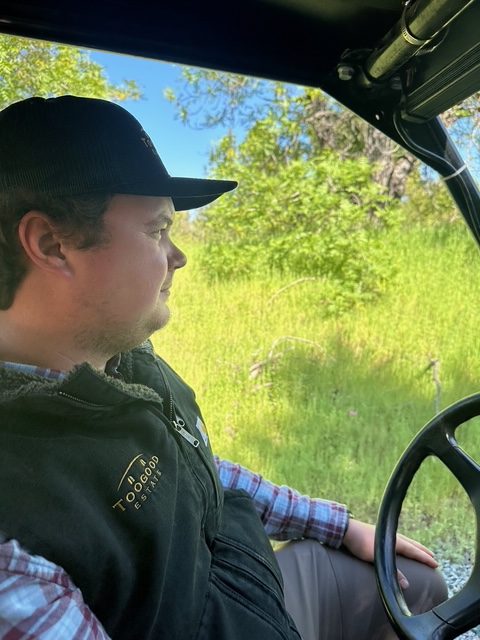
Tim Middlestadt and his wife run this family-owned winery. The wine style is “not-too-big” wines that Tim says are “fiscally approachable,” averaging in the $30 to $50 range.
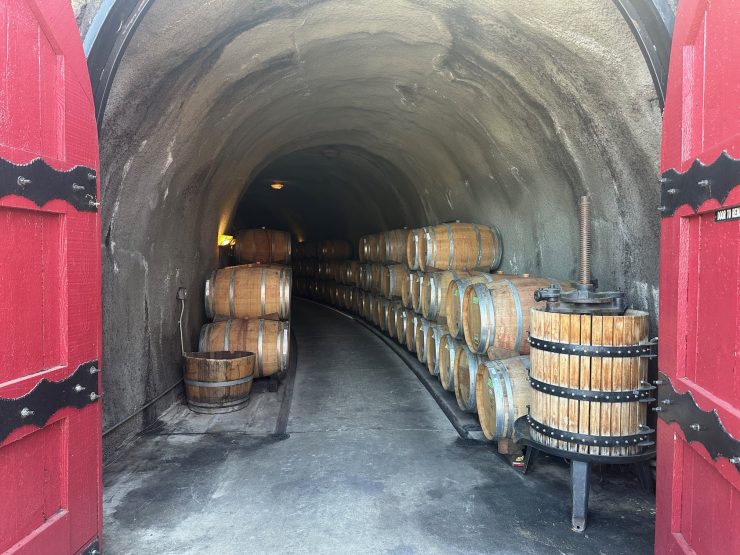
Their wine club offers four different options, and the most popular is their Port selections. Winemaker Marco Cappelli’s grandfather made Port, allowing him to use the term for this fortified wine legally. He makes 25 versions of Port for Toogood, including a very tasty Pinot Noir and an Albariño.
See more about Toogood’s AirBnB rentals.
Finding Their Wine Roots in Gold Rush Territory
Skinner Vineyards in Rescue, Calif., has a story that goes back many generations. The current owner, Michael Skinner, is a sixth-generation Northern Californian who grew up in San Francisco.
A Gold Rush-Era Cemetery
He and his wife, Carey, did not know that his ancestors were in the wine and spirits industry until their son discovered a Gold Rush-era cemetery with a Skinner headstone in the early 2000s. Curious, the family investigated and realized Mike’s three-times great-grandfather was James Skinner, namesake of J. Skinner Winery, established in 1861.
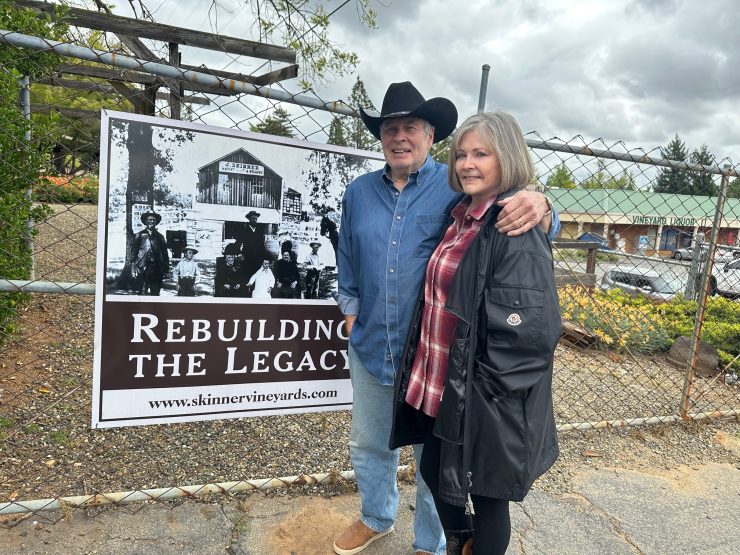
California’s Oldest Surviving Wine Cave
Mike and Carey, whose home is in Los Angeles, eventually found what may be the oldest surviving wine cave in California. The historic building, which was being used as a plant nursery, is being restored and is part of the National Register of Historic Places. This building is on the site of the original J. Skinner Native Wine & Brandy. The property ran along a well-traveled road that later became the Pony Express Trail (now Green Valley Road).
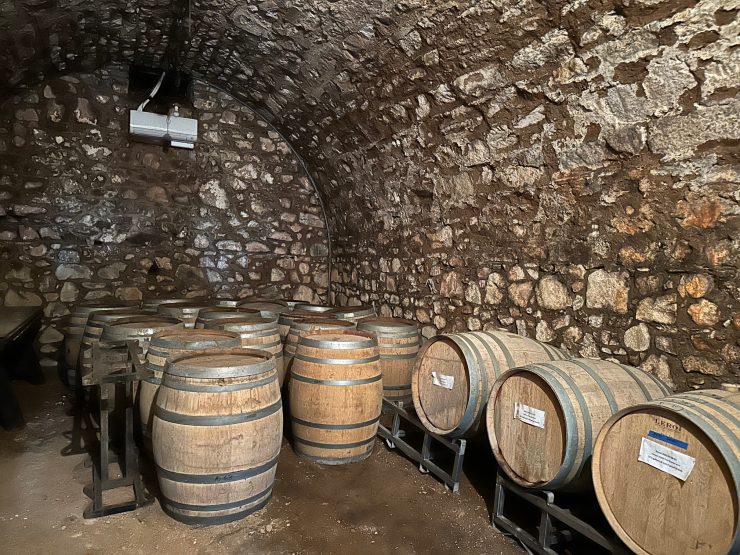
The Skinners subsequently purchased two properties, one in the Fair Play AVA and the other in Green Valley Ranch in the unincorporated town of Rescue. They currently have horses and a tasting room in Green Valley. They started their winery in 2006, and their first vintage of Syrah and Viognier was in 2007. Their wines are mostly Rhône blends.
To honor the Skinner legacy, Mike and Carey searched for and acquired 22 ancient Mission vines dating to around 1900. They planted them at the original cellar site. Franciscan missionaries originally planted Mission grapes to produce sacramental wine and Angelica, a sweet grape juice fortified with brandy. The vines nearly disappeared during Prohibition in the 1920s.
Skinner’s current release of Angelica, a blend of the 2008, 2011, and 2014 vintages, is $125. It is a divine wine.
Another nod to the ancestors is the Native Rouge, a unique wine you will not find anywhere else. The blend includes legacy varieties like Trousseau, Petite Bouschet, Mission, and Carignan. Other grapes include Zinfandel, Cinsault, Counoise, Mourvèdre, Marsanne, and Viognier. This crunchy and fruity red sells for just $18.
The Skinners lost their home, as did their son, in the Pacific Palisades fire. Soon after our visit, they hosted an event for first responders and their families. They had also loaned their Fair Play property to Idaho firefighters during the Caldor fire in 2021, and one of their sons is a firefighter.
If You Go
El Dorado County may be one of the most underappreciated American Viticultural Areas. Because of its myriad microclimates, the area has the unique ability to grow almost any grape variety. It’s also beautiful, with lush and green rolling hills.
If you visit El Dorado County, Placerville is a good launching point, 55 miles northeast of Sacramento International Airport.
For more information, contact Visit El Dorado, which sponsored my trip.
Hotels in California Gold Rush Country
- Various hotel accommodations are available, including the hip, newly renovated Extraordinary Camino Hotel, which offers a unique boutique hotel experience.
- The Gold Rush-era (and possibly haunted) Historic Cary House Hotel is in downtown Placerville, where I stayed. It’s convenient to the restaurants, coffee bars, and shops in the thriving and picturesque downtown.
Food
- Try The Forester Grill Haus, across the street from the Extraordinary Camino Hotel in Camino, for very good German and plentiful food.
- In downtown Placerville, Franny’s Farm to Table offers scratch-made local fare and rustic charm in a historic building next to the original Hangman’s Tree saloon.
- The Independent Restaurant and Bar in downtown Placerville is more upscale. It offers a seasonal American fusion menu, excellent craft cocktails, and a solid wine list.
- Smith Flat House, on the outskirts of Placerville, is built over an old gold mine. It offers cellar and courtyard dining. The restaurant purchases products from local farmers, winemakers, and other food artisans.
- To meet Placerville locals and have a darn good cup of coffee, try Cuppa Coffee & More.
More wineries in California Gold Rush Country
- Cappelli Wines—Winemaker Marco Cappelli owns a unique tasting room in downtown Placerville. Placerville locals can return their bottles for a discount on their next purchase.
- Miraflores Winery – Award-winning wines in the Pleasant Valley region of Placerville
- Holly’s Hill Winery – High-elevation Rhône varieties, in Placerville
- Element 79 Vineyards – Somerset, Calif., in Fair Play AVA
You Might Also Enjoy:
- In Ojai, California Wine Country, Thinking Small Produces Big Flavors
- Casa Larga: Gateway to the Finger Lakes Wine Region
Terry Nozick is a Los Angeles-based food, wine, and travel writer whose blog is Truth ‘n Wine.

